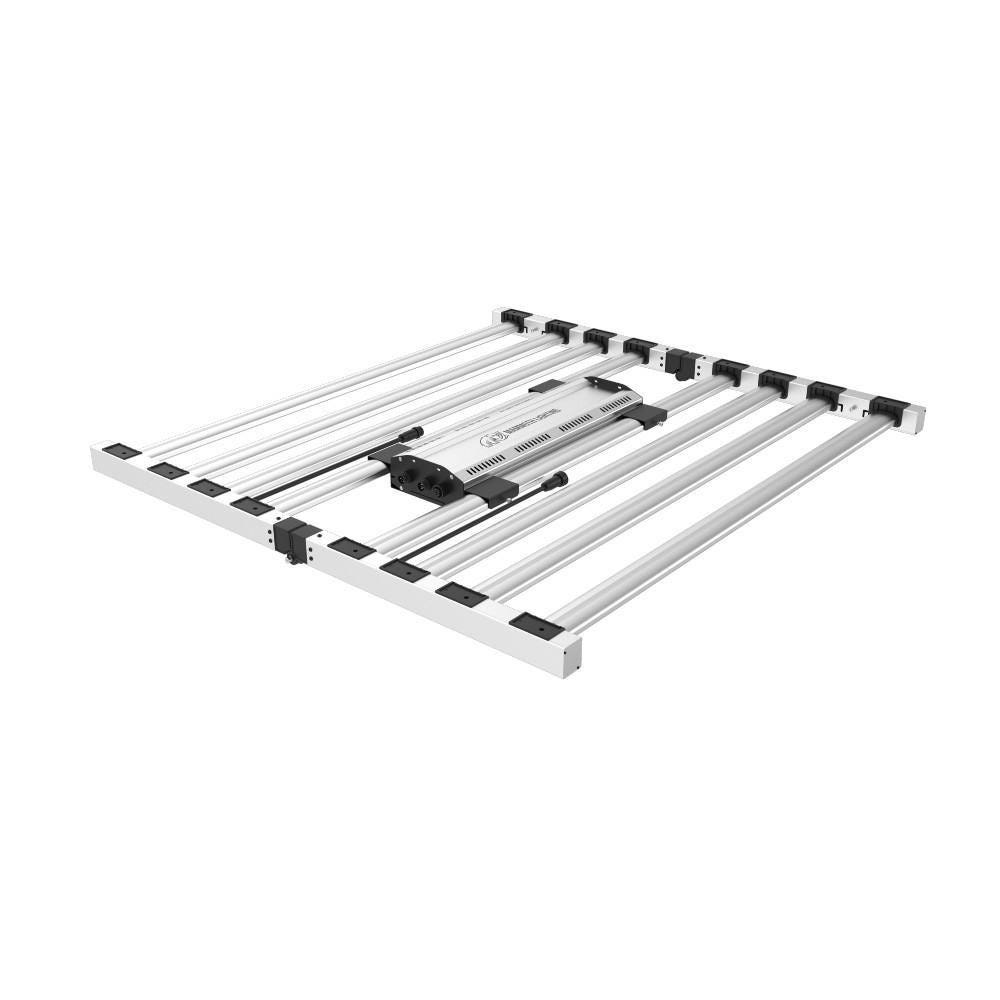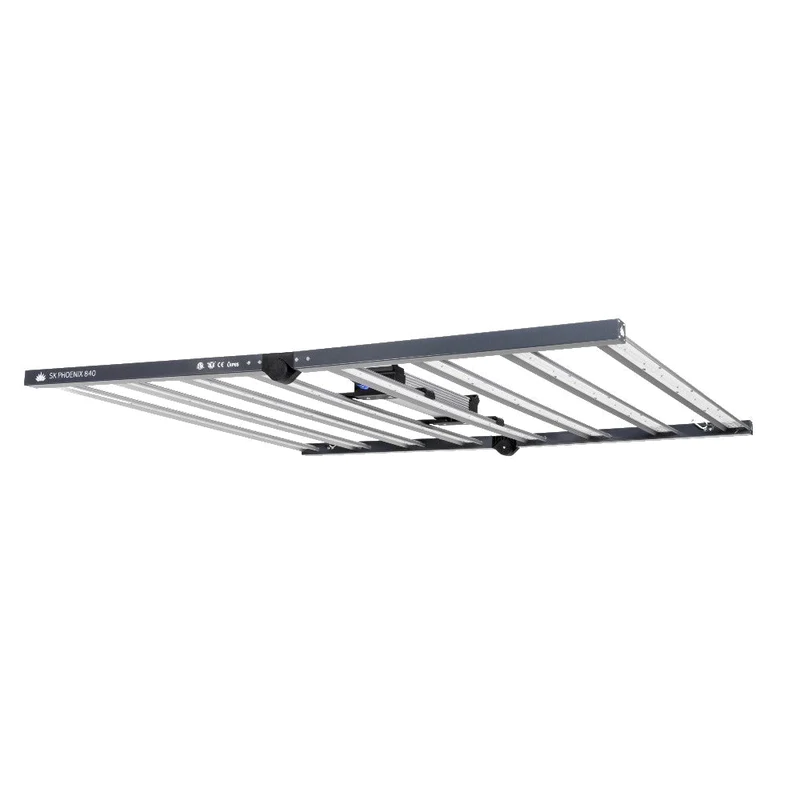- Home
-
SHOP ECO FARM
- ECO Farm Grow Lights
- ECO Farm LED Grow Lights
- ECO Farm Quantum Board
- ECO Farm Samsung LED Grow Lights
- ECO Farm COB Grow Lights
- ECO Farm Commercial Lights
- ECO Farm Supplemental Grow Light
- ECO Farm Fluorescent grow lights
- ECO Farm HPS & MH Grow Lights
- ECO Farm CMH Grow Lights
- ECO Farm HID/CMH Bulbs & Ballasts
- ECO Farm Grow Tents & Kits
- ECO Farm 2x2ft Grow Kits
- ECO Farm 3x3ft Grow Kits
- ECO Farm 3.3x3.3ft Grow Kits
- ECO Farm 4x4ft Grow Kits
- ECO Farm 5x5ft Grow Kits
- ECO Farm Grow Tent - Standard Style
- ECO Farm Grow Tent - Extension & Roof & Lodge Style
- ECO Farm Extraction & Harvest
- ECO Farm Rosin Press Machine
- ECO Farm Dry & Wet Trimmers
- ECO Farm Oil Accessories
- ECO Farm Medicinal Plants Grinder
- ECO Farm Medicinal Plants Containers
- ECO Farm Medicinal Plants Dryer
- ECO Farm Refrigeration Dryer
- ECO Farm Climate Control & Other Accessories
- ECO Farm Inline Duct Fans
- ECO Farm Oscillating Fans
- ECO Farm Exhaust Fans
- ECO Farm Air Filter
- ECO Farm Duct Muffler
- ECO Farm Ventilation Kits
- ECO Farm Plant Humidifiers
- ECO Farm Plant Dehumidifiers
- ECO Farm Hydroponic Accessories
- ECO Farm Other Accessories
- ECO Farm Hydroponics Microscopes
-
TOP BRANDS
- Grow Lights Brands
- Adjust-A-Wing
- Apollo Horticulture
- Bestva
- Black Dog LED
- California Lightworks
- ChilLED Grow Light
- Eco Farm
- HLG - Horticulture Lighting Group
- Kingled
- Kind LED
- Mars Hydro
- Morsen
- Neilo
- NextLight
- Phlizon
- PlatinumLed
- Roleadro
- Optic LED Grow Lights
- ViparSpectra
- Vivosun
- EYE Hortilux
- IPOWER
- NanoLux
- Phantom grow light
- Gavita grow lights
- Grower's Choice
- Lumatek
- Maxibright
- Yearld Pro
- ThinkGrow
- Crecer Lighting
- Green Sunshine Electric Sky
- fohse aries
- loriflux
- luxx
- fluence
- iluminar
- Lex
- LTC
- Rayonled
- FGI
- PHOTONTEK
- Grow Tents & Kits Brands
- Apollo Horticulture
- Black Box
- CoolGrows
- Eco Farm
- GrowLab
- Gorilla Grow Tents
- Mars Hydro
- Quictent
- Secret Jardin
- Unit Farm
- TopoGrow
- VIVOSUN
- Topolite
-
COMPANY INFO
-
COOPERATE WITH US
- Blog
Mammoth Lighting Fold Series MF08 LED Grow Light VS Spectrum King Phoenix 840W LED Grow Light
February 11, 2023
Do you want to grow organic vegetables and flowers at home? Or, do you want to brighten up a dull interior with some greenery? If so, then you need to invest in quality grow lights to create a peaceful atmosphere in your home.
Grow lights allow you to grow a variety of plants in any environment and time of year. These lights are specifically designed to replace natural sunlight, boost photosynthesis and provide the ideal color spectrum for plants to develop and thrive.
These grow lights are an essential tool for successful indoor gardening. Unfortunately, shopping for grow lights can be challenging as you may come across confusing jargon. But don’t let that scare you, because this list of the best grow lights 2023 will help you grow plants at home with ease.
The Impact of Different Light Colors on Plants
Sunlight contains the full spectrum of light. Plants use this entire spectrum for photosynthesis; blue and red light seems to be the most crucial. Here’s how they help plant growth: Blue and red light seems to be the most crucial. Here’s how they help plant growth:
Blue light: It is needed during the germination phase of the plant. Stronger blue light concentrations encourage the development of healthy roots. Besides, blue light regulates plant growth, making it ideal for growing stocky, short seedlings and foliage plants.
Red light: It positively affects the growth of a plant in multiple ways, particularly during the blooming and flowering phases. Certain red wavelengths increase the hormone production in the vegetation of a plant to prevent chlorophyll breakdown. As a result, the plant grows taller, generates more nutrients, and grows more leafy vegetation.
Apart from red and blue lights, research also suggests that white light can be great for plants, particularly when used with other colors. To ensure that your indoor garden lights have all these colors in the spectrum, you can invest in LED grow light modules.
Mammoth Lighting Fold Series MF08 LED Grow Light

Features:
The Mammoth LED grow lights are built with high-quality Samsung diodes. The lights encompass a continuous range of wavelength from blue and green to red, creating a light blend matching the natural sunlight. 469 Samsung LM301B diodes per bar delivers the industry’s Highest PPFD and Yield. Mammoth customized their light spectrum to optimize plant growth and increase yields while consuming less energy and reducing operating costs compared with traditional horticulture technologies. With a proprietary blend of 3000k+5000k+660nm+730nm, for full cycle growth. 730nm speeds up flower (~5 days) and adds up to 5% more yield. Up to 5x5 flower coverage, 7x7 veg coverage. Strategically designed bars/spacing delivering more even lighting coverage (and growth) over a 5'x5'.
Spectrum King Phoenix 840W LED Grow Light

Features:
Spectrum King’s Phoenix 840W is ideal for photon-hungry crops that can handle strong light. With 16% less wall power than standard HPS fixtures, the 840 provides some decent output compared to other fixtures while still saving electricity and heat. Spectrum King’s custom spectrum is tested and customized to maximize plant and flowering cycle growth. The intensity of this dimmable light can be as low as 10%, enabling growers to simulate a sunrise/sunset effect. Spectrum King’s innovative Cryo-Therm cooling technology features an ultra-thin profile that maximizes airflow and minimizes microclimates. The Phoenix 840 grow light is optimized for single or multi-level planting close to the canopy.
What to Consider When Buying an LED Grow Light
Wattage
Wattage determines the potential energy available to plants. The “wattage” listed on the sales page of an LED light (or other type of grow light) refers to the watts that are drawn from your home outlet, but in reality that is not the amount that is emitted and arrives at the surface. Instead, look for a conversion rate, rated in micromoles per Joule (µmol/J). A good amount conversion rate is around 2.5µmol/J.
Coverage Area
PPFD measures the number of photons that arrive in an area over a given amount of time. PPFD is measured in micromoles per square meter per second (µmol/m2/S). Usually, the higher the number the better.
Light Intensity
Since the height of the LED grow light determines the intensity of the light, you might be wondering how high you should hang your light. It’s a great question because it depends on the kind of light and the stage of growth your plant is in. Ideally, we want intense coverage over a large area, but this is only possible with very high-end equipment, so we need to find a balance between the two and a couple factors play into this: heat produced by the light, brightness, and stage of plant growth. We have a handy chart for your reference that corresponds with LED wattage and light height.
Light Spectrum
Light spectrum is a crucial factor for grow lights. In the most general sense, there are three categories of LED grow light spectrums available: targeted (meaning blue light or red light focused) and broad (meaning white light focused). These days the majority of LED systems are full spectrum. This is because full spectrum contains enough variation in light that allows it to cover the entire grow cycle of a plant and spectrums can be adjusted to match the current stage of growth. These tunable LEDs usually have a switch that says “Bloom/Veg” that allows you to emphasize coloration. Newer models can be programmed using controllers that can control schedules, light intensity, and spectral range.
Plants mainly utilize light that is within the visible spectrum or just outside of it. Therefore, grow lights aim to produce the exact coloration that plants desire — this allows for the most efficient use of electricity while having the best results.
Conclusion
There are a lot of factors to consider when looking for the best LED grow lights, which is why we’re here to help point you in the right direction.
They can be a handy solution for growing houseplants, especially if you don’t have as much sunlight where you live, and during winter when light levels naturally decrease.
Also in Indoor Grow LED Grow Light
HLG Greenhouse Pro HE HV 630W LED Grow Light VS Geeklight grow light 480W hydroponic led grow light
October 20, 2023
